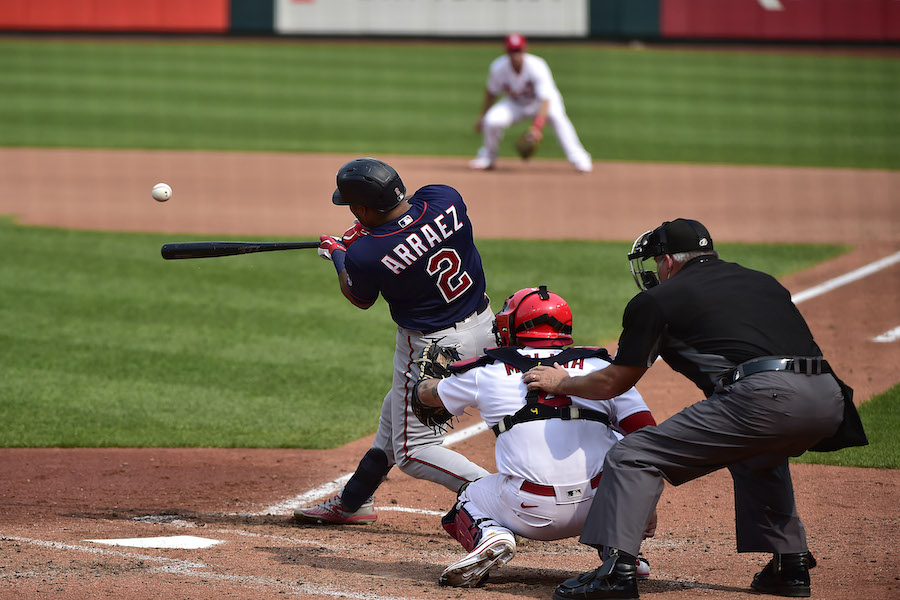We can’t know what the asking price for any player who wasn’t traded by August 31 was. We can’t know whether teams outside playoff contention were willing to deal anyone under team control beyond 2020. We can, however, say that the Twins front office failed to make needed upgrades at this year’s deadline.

Image courtesy of Jeff Curry – USA Today Sports
The rationalizations they offered after the quiet passing of that deadline sounded reasonable enough. The team anticipated getting Byron Buxton and Josh Donaldson back, and that figured to improve their offense immediately. In fairness, those guys did return, and they did have a positive impact on the lineup, and (despite further injury issues) the team did manage to eke out a division title. The front office believed they could weather the injuries and underperformance they’d dealt with to that point, and be fully healthy and productive by the time the playoffs rolled around,
Here’s the problem: to whatever extent they were being honest when they made those statements on Sept. 1, the front office was viewing the trade deadline as one path to solving the problems that had already arisen. That’s not how a contending team needs to view the trade deadline. For a truly great team, or one with that potential, the trade deadline needs to be viewed as a chance to solve problems that have not yet arisen. It’s the art of heading off trouble at the pass.
Obviously, that’s not easy. Look around, though, and you’ll notice that the smartest, most aggressive teams always do it. The 2017 Dodgers were 74-31 at the end of July, leading the NL West by 14 games, but they made a last-second trade for Yu Darvish, because that raised both their floor and their ceiling come October. That ended badly, when the Astros lit Darvish up in the World Series, but first, he gave the team nine very good regular-season starts and dominant outings in both the NLDS and the NLCS.
The 2017 Astros had a commanding lead in their division and a deep enough pitching staff to make an October run, but traded for Justin Verlander just before the deadline for postseason eligibility. The 2014 Athletics dealt for Jeff Samardzija and Jason Hammel on July 4, but on July 31, they dealt for Jon Lester, too. Lester eventually lost the AL Wild Card Game, but without his stabilizing presence, the Oakland rotation would have collapsed altogether. They went 15-29 in games started by anyone but Lester over the final two months, but 7-4 when Lester pitched.
In late August, it was clear that the Twins needed offensive help. There were many candidates, though relatively few hitters ended up being dealt. It was a difficult trade deadline to navigate, and even if the Twins knew better than to assume the best about their in-house candidates, they faced several obstacles in trying to develop and complete negotiations on a deal. Still, it feels as though they were too confident, both in the health of their players and in their likely performance levels over the balance of the season.
Because 2019 marked such a substantial departure from the track records of Mitch Garver, Jorge Polanco, Max Kepler, and Ehire Adrianza, one inevitable challenge of 2020 was assessing how much of those improvements were sustainable, and to what extent regression would erase them. The Twins were slow to acknowledge the latter, keeping Polanco in premium lineup spots too long and remaining too satisfied with Adrianza as a utility infielder and near-everyday player.
The other challenge, which is a perennial one for every team but was especially cogent in the case of these Twins, was judging the probability that Buxton, Donaldson, and Arraez would each be able to get and remain healthy, and including in that analysis the risks that Miguel Sanó (past injury issues), Nelson Cruz (age), Alex Avila (both of those things), Kepler (known nagging issues and a history of others), or Polanco (never, it seems, fully healthy, dating to last June) would also either break down or have their performance compromised by some ailment. They surveyed those issues, considered their (very good) depth of young players at the alternate site, and elected to stand pat. That was a miscalculation, and I would argue that it was a pretty poor one.
Donaldson’s injury issues have all been related; there was no reason to assume he would suddenly have no further trouble with them. Buxton has proved, across several seasons and in myriad ways, that he’s injury-prone. That’s not a comment on his toughness, intelligence, or self-control, but nor is it really debatable. Avoiding serious injury, whether when being hit (or not) by a pitch, running into (or stopping shy of) the wall, or running the bases, is a skill, and Buxton doesn’t possess it. Arraez’s knees have been balky since he was in the low minors. The other, ostensibly healthy players listed still bore clear signs of posing injury risks. The front office needed to accept the fact that they were, as a group, unlikely to be available and productive enough to get them far in the postseason, and go make an addition or two. They failed in that endeavor, and now have a long winter to weigh some very similar decisions.
MORE FROM TWINS DAILY
— Latest Twins coverage from our writers
— Recent Twins discussion in our forums
— Follow Twins Daily via Twitter, Facebook or email

